In honor of January 27, International Holocaust Remembrance Day, I am sharing some reflections from my field research trip to Germany last summer. I visited dozens of museums, monuments, and other memory sites – primarily in Berlin but also in Nuremberg – to understand better how Germany has grappled with a history of discrimination and violence, and to draw lessons for other countries, including the United States. Being present, simply being in a place, provides insights beyond books and reports.
Nuremberg, at the center of antisemitism
Visiting Nuremberg and the Nazi Party Rally Grounds and Headquarters was a chilling experience. Nuremberg was a cultural center for antisemitism and, later, the legislative center for Nazism. Jews were targeted for murder in Nuremberg going back centuries.
At the 1935 Nazi Party rally, Hitler called the Reichstag (parliament) to meet in Nuremberg to pass the “race laws.” The Nuremberg Laws revoked citizenship rights for Jews, setting Germany’s legal foundation for the Holocaust. The Laws also extended to Roma people and Black people, established standards for German “racial purity,” and forbade miscegenation. Other forms of racial and political discrimination would follow, promulgated in “supplementary laws.”
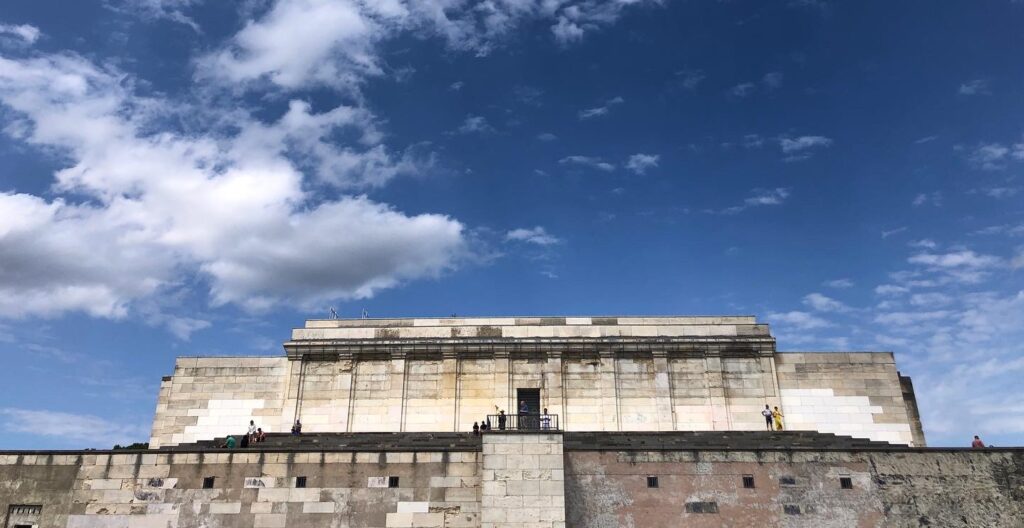
Another visit I won’t soon forget, also in Nuremberg, was to Courtroom 600 of the Nuremberg Palace of Justice. This is perhaps the most famous courtroom in the world, where in 1945 and 1946 the Allied powers prosecuted Nazi leaders for war crimes, crimes against humanity, crimes against peace, and conspiracy to commit the aforementioned crimes.
I’ve studied and discussed the Nuremberg trials in my work for years. Now I was finally in the room where it happened. It was strange, though, to be in the same space where evil was put on trial and where some justice was done for the millions and millions of victims of World War II, including more than 6 million Jews.
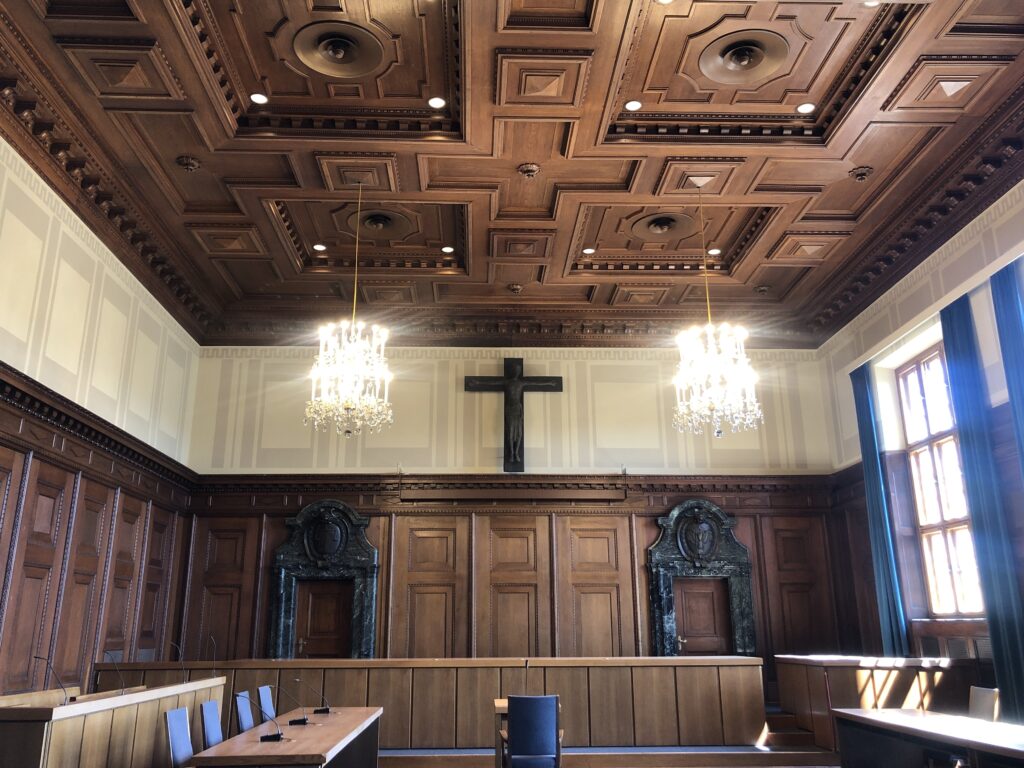
It’s important to remember why the trials were held in Nuremberg, rather than Berlin (Germany’s capital, at the time under the divided control of the Allies) or Munich (where the Nazi Party was born). This was intentional, because the legal framework for the Holocaust was developed in Nuremberg. The trials answered unspeakable acts with a legal process. It might have been easy to summarily execute Nazi leaders, some thought at the time. But the international community decided it would be better, if harder, to “stay the hand of vengeance” and instead offer the hand of justice.
Berlin, and the many memories and memorials
Back in Berlin, my home base for the summer, I visited the Memorial to the Murdered Jews of Europe. It is striking in the simplicity of its design (a series of dark, coffin-like columns set on an undulating terrain), sobering in its size, and challenging as a visual marker of genocide in the city center.
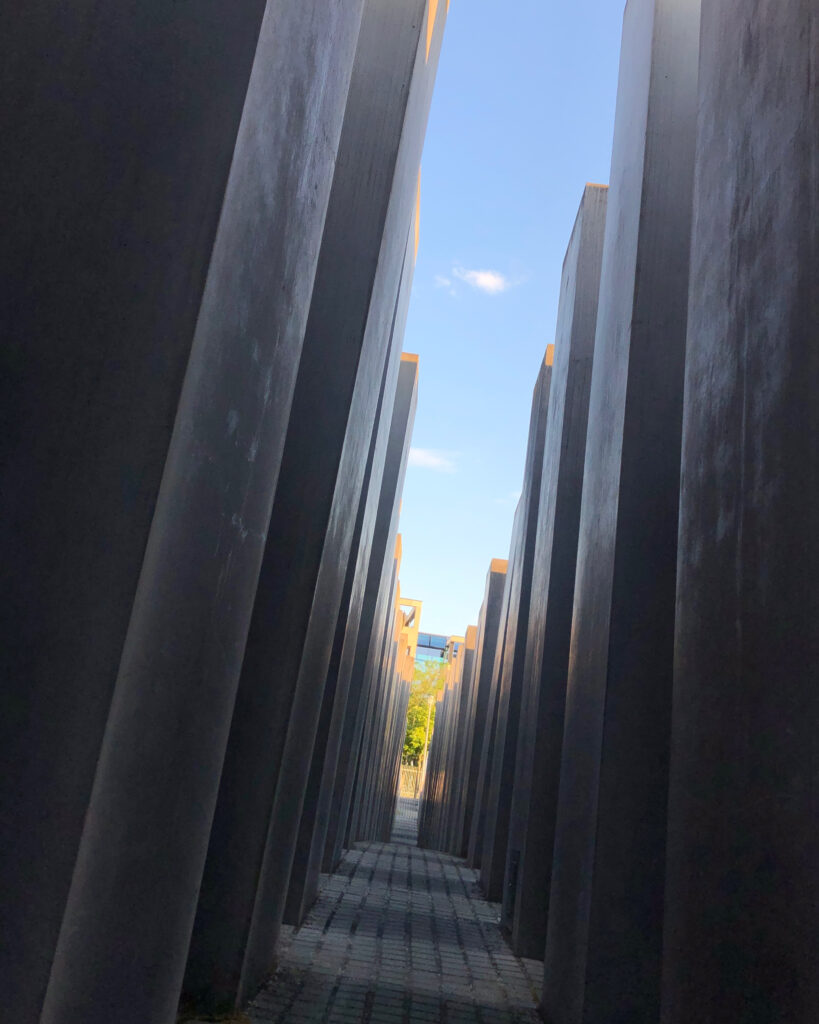
One can say the same of the Memorial to Europe’s Sinti and Roma Murdered Under Nazism, about a ten-minute walk away. For reference, these are ethnic minorities the Nazis also targeted:
“The Sinti and Roma settled in the countries of modern-day Europe centuries ago. The term ‘Sinti’ designates the members of an ethnic minority that settled in Germany and neighbouring countries in the early 15th century. The term ‘Roma’ refers to the ethnic minority that has lived in eastern and south-eastern Europe since the Middle Ages. Outside German-speaking countries, the term ‘Roma’ is also used as a collective term for the ethnic minority as a whole.”
The beautiful memorial uses multiple formats: static and digital information screens; a reflecting pool, with a triangle at the center symbolizing inmate markings at the concentration camps (the flower on top is replaced once daily); and stone slabs representing destruction, fragmentation, loss, and injury. A poem, “Auschwitz,” by Italian Roma musician Santino Spinelli, surrounds the base of the reflecting pool; a violin piece “Mare Manuschenge” (“Our People”), composed by Romeo Franz, plays at all hours. The stone slabs bear the names of 69 locations where Sinti and Roma were collected, concentrated, and murdered.
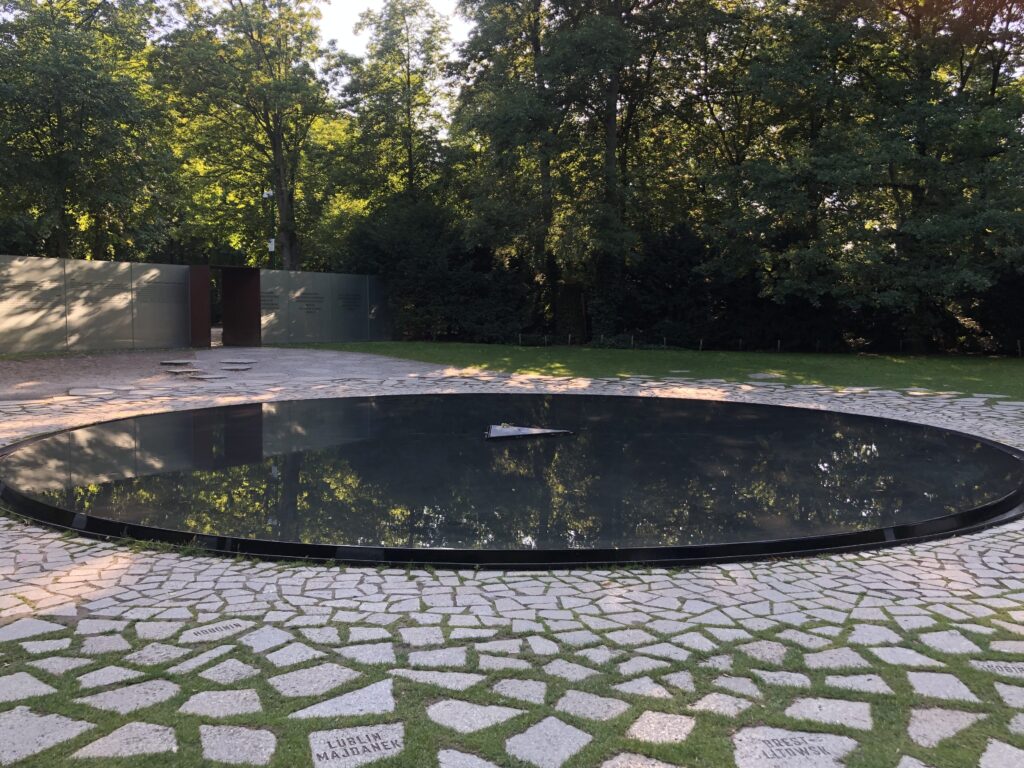
Regrettably, Roma and Sinti are often forgotten in discussions of the Holocaust and World War II. German Chancellor Helmut Schmidt affirmed in 1982, “The Nazi dictatorship inflicted a grave injustice on the Sinti and Roma. They were persecuted for reasons of race. These crimes constituted an act of genocide.”
German President Roman Herzog added in 1997: “The genocide of the Sinti and Roma was carried out for the same motive of racial madness, with the same intention and the same will to the planned and final annihilation as that at the Jews. They were murdered systematically and family-wise in the entire sphere of influence of the National Socialists, from infants to the elderly.” Yet memorialization of these victims’ suffering has been grievously slow and far from adequate (this memorial was only established in 2012).
Repressive governments rarely target just one group
In an article in the International Journal of Transitional Justice, political scientist Claire Greenstein shows that “organized victim groups [namely, Jews, Social Democrats and Communists] received reparations [for Nazi crimes] from the West German government in the 1950s, while Romani Germans, who did not organize until the late 1970s, were largely and deliberately excluded from receiving reparations payments until 1981.” Roma communities continue to be marginalized in Germany and throughout Europe.
Rarely, if ever, do repressive governments target one minoritized group. In the case of the Nazis, they persecuted multiple groups for their identity, chiefly Jews and Roma and Sinti, as I’ve mentioned already, but also Black people, gay people, people with disabilities, trade unionists, and others that Nazi leaders deemed to be outside or opposed to their views of a “pure Aryan race.”
My visit to the Memorial to Homosexuals Persecuted Under Nazism was a poignant one. It made me wonder if the next time I visit Germany the memory landscape will have expanded to better memorialize other groups the Nazis marginalized and repressed.
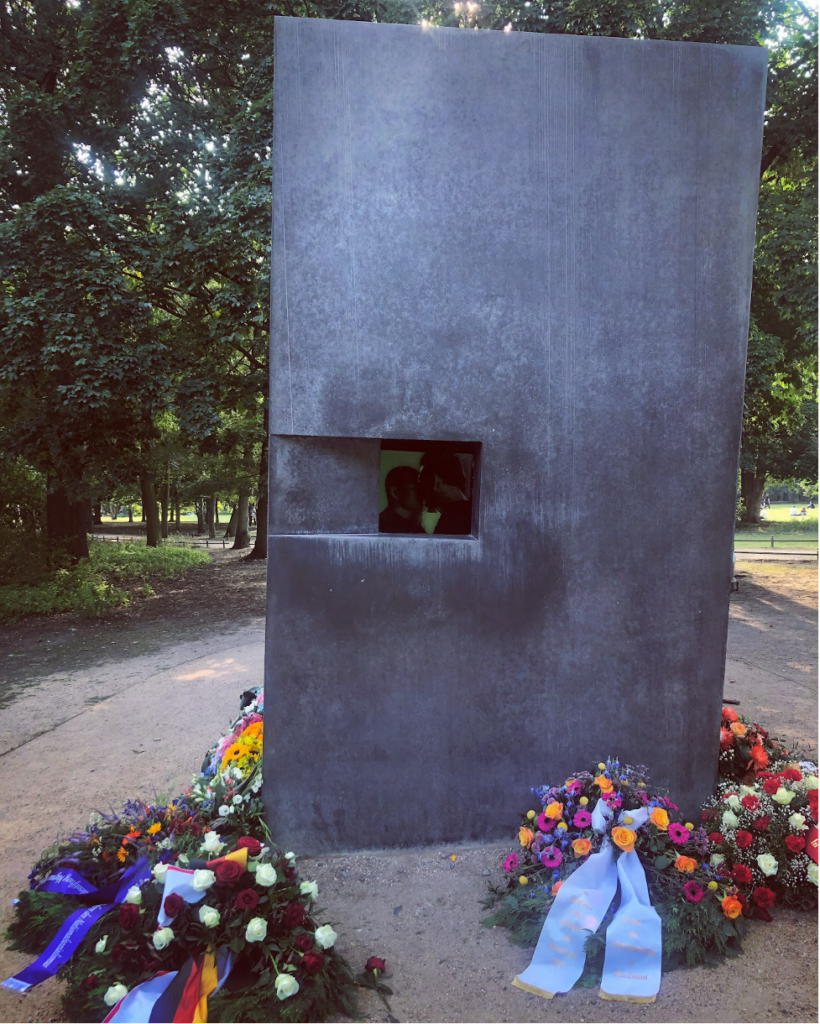
The marker that is everywhere
One last experience I’ll share is one I had almost every day, walking the streets of Berlin: coming across Stolpersteine (stumbling stones), one of Germany’s most well-known Holocaust memorialization projects. These are part of the world’s largest decentralized monument. Each small brass cobblestone starts with “Here lived,” followed by the victim’s name, date of birth, and fate: exile, suicide, or, in most cases, deportation, internment, and murder.
Stolpersteine throughout Europe’s cities and villages are an everyday and everywhere reminder of the past. They are as beautiful and powerful as they are painful. I can’t help but wonder what a similar effort could look like in the United States, as we grapple with historical, contemporary, and systemic injustice. Where would we start?

While in Germany, I was fortunate to join a multidisciplinary research group shared between the Freie Universität Berlin, Humboldt Universität zu Berlin, and Universität Potsdam. I had the opportunity to participate in a weekly research workshop and attend lectures and book talks by colleagues in law, history, and political science. This was a particularly productive, challenging, and generative summer, and I am grateful for support from my hosts and my own university.
I’ve returned from this intense and emotional experience reenergized to keep researching and teaching human rights, transitional justice, and international law.



